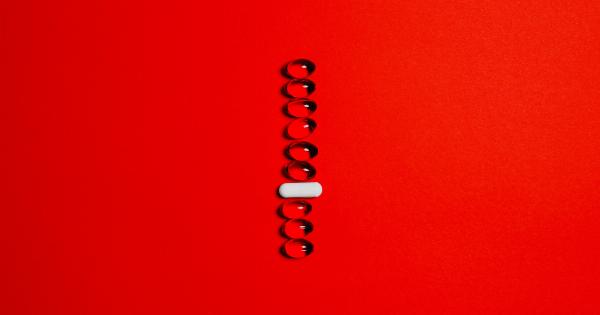Epilepsy is a neurological disorder that affects millions of people around the world. It is characterized by recurrent seizures, which are sudden and uncontrolled bursts of electrical activity in the brain.
Although traditional treatments for epilepsy such as antiepileptic drugs (AEDs) have been effective in controlling seizures, they are not always an option for everyone.
Some people experience side effects from AEDs, while others may not respond to them at all. In such cases, alternative therapies may be useful for managing epilepsy.
1. Ketogenic Diet
The ketogenic diet is a high-fat, low-carbohydrate diet that has been used to treat epilepsy since the 1920s.
The diet is designed to induce a state of ketosis, which is a metabolic state that occurs when the body burns fat for energy instead of carbohydrates.
Research has shown that the ketogenic diet can be effective in reducing seizures in some people with epilepsy. In one study, 38% of children with epilepsy who followed the ketogenic diet experienced a 50% or greater reduction in seizures.
2. Neurofeedback
Neurofeedback is a type of biofeedback that uses EEG (electroencephalogram) technology to train the brain to regulate its own electrical activity.
It involves placing electrodes on the scalp to measure brain activity, which is then displayed on a computer screen.
By observing their brain activity in real-time, people with epilepsy can learn to regulate their brainwaves and reduce the frequency and severity of seizures.
Studies have shown that neurofeedback can be effective in reducing seizures in people with epilepsy.
3. Vagus Nerve Stimulation (VNS)
VNS is a type of therapy that involves implanting a small device under the skin in the chest that sends electrical impulses to the vagus nerve in the neck.
The vagus nerve is connected to many areas of the brain and is involved in the regulation of seizures.
VNS has been shown to be effective in reducing seizures in some people with epilepsy. In one study, people with drug-resistant epilepsy who received VNS experienced a 51% reduction in seizures.
4. Cannabis (CBD oil)
Cannabis or CBD (Cannabidiol) oil has been suggested as a potential treatment for epilepsy. CBD is a non-psychoactive compound found in marijuana that has been shown to have anti-seizure properties.
Some studies have shown that CBD oil can be effective in reducing seizures in people with epilepsy, especially children with Dravet syndrome and Lennox-Gastaut syndrome.
However, more research is needed to determine its safety and effectiveness as a treatment for epilepsy.
5. Acupuncture
Acupuncture is a traditional Chinese medicine technique that involves inserting fine needles into specific points on the body to promote healing and reduce pain. It has been suggested as a potential treatment for epilepsy.
Some studies have shown that acupuncture can be effective in reducing seizures in people with epilepsy. However, more research is needed to determine its safety and effectiveness as a treatment for epilepsy.
6. Herbal Supplements
Several herbal supplements have been suggested as potential treatments for epilepsy. These include:.
- Valerian root
- Kava kava
- Passionflower
- Skullcap
- Chamomile
Although some studies have shown that these supplements can be effective in reducing seizures in people with epilepsy, more research is needed to determine their safety and effectiveness.
7. Reflexology
Reflexology is a type of massage therapy that involves applying pressure to specific points on the hands and feet. It has been suggested as a potential treatment for epilepsy.
Some studies have shown that reflexology can be effective in reducing seizures in people with epilepsy. However, more research is needed to determine its safety and effectiveness.
8. Massage Therapy
Massage therapy involves the manipulation of muscles and other soft tissues in the body. It has been suggested as a potential treatment for epilepsy.
Some studies have shown that massage therapy can be effective in reducing seizures in people with epilepsy. However, more research is needed to determine its safety and effectiveness.
9. Music Therapy
Music therapy involves using music to promote relaxation and reduce stress. It has been suggested as a potential treatment for epilepsy.
Some studies have shown that music therapy can be effective in reducing seizures in people with epilepsy. However, more research is needed to determine its safety and effectiveness.
10. Meditation
Meditation is a technique that involves focusing the mind on a particular object, thought, or activity to promote relaxation and reduce stress. It has been suggested as a potential treatment for epilepsy.
Some studies have shown that meditation can be effective in reducing seizures in people with epilepsy. However, more research is needed to determine its safety and effectiveness.
Conclusion
Although traditional treatments such as AEDs are effective in controlling epilepsy in many people, alternative therapies may be useful for those who cannot tolerate or do not respond to AEDs.
Ketogenic diet, neurofeedback, VNS, cannabis, acupuncture, herbal supplements, reflexology, massage therapy, music therapy, and meditation are some alternative therapies that have been suggested as potential treatments for epilepsy. It is important to speak with a healthcare provider before trying any alternative therapy for epilepsy.




























